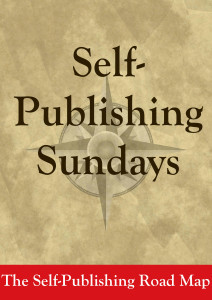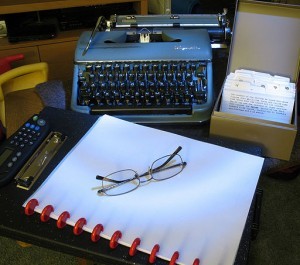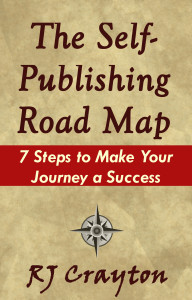R.J. Crayton's Blog, page 14
November 22, 2015
NaNoWriMo – Week 3
 The reason I’ve never done NaNoWriMo in the past is because November is a busy month for my family. With two birthdays and Thanksgiving, and the kids out of school for Thanksgiving break, it seemed like it would be difficult to find time to write.
The reason I’ve never done NaNoWriMo in the past is because November is a busy month for my family. With two birthdays and Thanksgiving, and the kids out of school for Thanksgiving break, it seemed like it would be difficult to find time to write.
I’d done a pretty good job of keeping on pace, but this week is where things fell apart. I have a title under a pseudonym coming out and had some editing stuff that just had to be done Thursday and Friday.
Then, I’d also reached a point in the story where I wasn’t sure exactly what I wanted to happen next. And my husband’s birthday was Friday. With all those things dovetailing, I fell behind.
The good news is that on Saturday, I sat down and wrote a story synopsis for the whole thing. Yes, I probably should’ve done that to begin with. However, I’m typically a pantser, so I like to just sit and write and let the story feel its way out. But, you really can’t do that with NaNo, because of the extensive word count that you need to contribute to the story each day. When you don’t know where things are headed, it can get really off track.
Having finished the synopsis, I’m feeling good about completing NaNo. I hope to get back on track today, and get a little ahead Monday and Tuesday, as Wednesday and Thursday will be tougher with the holiday. I’m not a Black Friday shopper (except online), so I don’t expect any additional pull for the remainder of the weekend.
So, here’s my NaNo totals so far. By day 21 of NaNo, if you’re on track (1,667 words per day), your final word count should be at 35,007. So, I’m a little behind, but not by tons.
Nov. 15 – 1,184
Nov. 16 – 616
Nov. 17 – 1,866
Nov. 18 – 1,920
Nov. 19 – 124
Nov. 20 – 0
Nov. 21 – 2,661
—————-
Week 3 total – 8,371
Week 2 total – 12,745
Week 1 total – 13,075
———————–
NaNo Total – 34,191
November 17, 2015
Superstitions for Writers?
 Last Friday was Friday the 13th. For those who are superstitious, that’s a bad day.
Last Friday was Friday the 13th. For those who are superstitious, that’s a bad day.
Also last Friday, while I was composing a tweet when I started thinking about superstitions, and how much stock people put in them. This thought occurred as I was composing a tweet. I reached for the hashtag symbol, and accidentally struck the dollar sign. As such, instead of #amwriting, I had $amwriting. This made me wonder if this was a simple error or fate. I mean $amwriting was surely the universe telling me my writing was going to bring in some cash, no?
Then, I dismissed the thought, thinking, “that’s kinda nuts.” But then again, there are so many things out there that are sorta nutty that people do because they believe their good omens. And when they do them, they feel better about the process, and that leads to the doing a better job, so the belief of a good omen can turn out to be a self-fulfilling prophecy.
Baseball is notoriously superstitious, with all the players having their own things they have to do before each game to make sure they can play optimally. Players of other sports are also superstitious. But superstitions aren’t related to the world of sports, as the Friday the 13th superstition shows us. And we all know 7 is lucky (unless that’s the percentage you got right on your test).
Are writers superstitious? More so than other groups of people, I mean. I don’t know. I haven’t heard any writerly superstitions that are commonplace. But, people do have preferences for places they like to write and ways they like to write. I’m pretty ritual free when it comes to writing. I’m happy to write wherever I am, but I do think I like $amwriting. I may start using that instead of the hashtag. Even though it’s had zero effect on me so far, I just have a feeling….
So, do you have any writerly superstitions or rituals you care to share?
November 15, 2015
NaNoWriMo Week 2 – Halfway There

The numbers should be adding up for NaNoWriMo
I think the one thing I’ve learned from two weeks of NaNoWriMo is that I can’t do all my writing in one sitting. While it wasn’t unusual for me, pre-NaNo, to just do one actual writing session for the day, it’s really hard to do that every single day for NaNo. In the past, even if I was writing multiple sessions, I would only do one project per session, or I would write for two hours, dividing my writing among two to three different projects and ensuring I got a word count of 1,500 (which is about 200 less than the NaNo requirement). I said last week that the hardest part was writing 1,700 words on a single project. With NaNo, I’ve found that I’ve planned to write my words over multiple sessions, usually one in the morning and one in the evening. It makes me feel less stressed as I stare at the screen.
I think, for me, NaNo has been good at getting me to push myself on a single project. I always kind of rolled my eyes at writers would decry how they were blocked or couldn’t write. And, truth is, I’m a hypocrite. I’ve had that problem, but never considered it a problem, because I just worked on something else. Eventually, in order to finish the book, I’d have to push through the section that was giving me trouble. But, I could delay and defer it by writing other stuff, stuff that was firing on all cylinders. Whilst I worked on the other stuff, my brain would work out the kinks in the difficult project.
With NaNoWriMo, I’m having to simply work out the difficulties, and write through them. This results in some writing that’s not great. But, the good news is, it’s not awful writing. It’s serviceable writing that will have to be cleaned up in the editing process. The other thing about NaNo, at least for me, is I picked a project I was stalled on. I think that’s making it harder, because I didn’t come at it with fire. It’s the end of my three-part series, my virus book.But, I’m feeling a little stagnated on how I want these characters to get to the end of their journey. That’s making it harder. I said to myself, “Do this for NaNo, and at least you’ll be done with it.” But I’m not sure that’s the best place, emotionally, to start a project at.
Nonetheless, doing NaNo has forced me to think about this book more than I had and plan for its writing. It’s forced me to write on it even when I don’t want to. This sort of goes against other advice I’ve heard, and even given out–which is to write only what you’re excited about. I guess the question is, can you manufacture excitement? I know there have been some days when I’ve sat down to write, my mind knowing I’m going to have to slog through it, and then suddenly, I hit a part of the scene that turns exciting and pulls me in and I have no trouble knocking out the word count. There are other days, when I start, and check the word count (100), and check the word count (213), and check the word count (326), and check the word count (394) and it just barely inches up and I know it’s going to be one of those days.
So, for those who are doing NaNo, we’re at the halfway point. How’s it going for you?
My Week 2 Stats
Nov. 8 – 1,878
Nov. 9 – 1,900
Nov. 10 – 1,690
Nov. 11 – 2,178
Nov. 12 – 1,965
Nov. 13 – 1,249
Nov. 14 – 1,885
——————–
Week 2 total – 12,745
Week 1 total – 13,075
———————-
Total Nano – 25,820
November 8, 2015
NaNoWriMo – One Week In

NaNoWriMo is all about the numbers
Last week, I said I was going to try NaNoWriMo this month. I thought I’d check in with a progress report.
So far it’s been different than I expected. I’d had a daily word count goal before, but it was only 1,500 words (so less than the 1,667 required for NaNo). However, that was spread across however many projects I wanted. If I got bored or wasn’t sure where to take the story next, I could just move on to a project that was flowing better.
No such luck with NaNo. I’ve got to figure out how to write that 1,667 every day. If I’m not exactly feeling a scene or not sure where I want it to go, too bad. I have to figure it out. That’s been different.
The good news is that NaNo has been a learning experience in that I’ve been way more committed. I’ve got a journalism background, so I take deadlines seriously. The idea of getting behind on the overall big project (50k words by Nov. 30) freaks me out. So, I’ve been much more zealous about making my word count. If I fall way behind, I know it will be too hard to catch up, so I’ve been writing when I normally would call it quits. On Nov. 3, I was out all day and didn’t get home and able to sit down in front of a computer until 11:30 at night. On a normal day, I would’ve just gone to bed. But, I knew I’d be way behind on NaNo if I did. So, I sat down for a sluggish hour and got 819 words.
I wrote 300 words one day, in the morning, but then got busy and didn’t have much time to write. Again, I sat down at 10 pm, and got another thousand words. Why? Because I knew 300 words for a NaNo day just wasn’t going to cut it. So, NaNo certainly inspires more consistency. That’s been an interesting lesson.
So far, here are my totals for the first week, Nov. 1-7
Nov. 1 2,158
Nov. 2 2,007
Nov. 3 819
Nov. 4 2,339
Nov. 5 1,828
Nov. 6 1,368
Nov. 7 2,556
——————
Total 13,075
November 1, 2015
Self-Publishing Sunday: NaNoWriMo
 Today begins National Novel Writing Month (NaNoWriMo). The goal of the month is to help writers who might be having trouble writing consistently to get into the habit.
Today begins National Novel Writing Month (NaNoWriMo). The goal of the month is to help writers who might be having trouble writing consistently to get into the habit.
During NaNoWriMo, writers are supposed to write enough so they can complete a 50,000 word novel in one month. This translates to roughly 1,667 words per day.
Some people decry NaNoWriMo saying you shouldn’t force writing. That writing is art and needs to be nurtured and loved and drain out when it’s ready. Of course, these are not people making a living from writing. In order to make a living from writing–and most job, really–you have to do it consistently, usually on a daily basis. So, NaNoWriMo, in my opinion is more like turning writing into your job, one that requires 1,667 words of input each day. Think of it as a sales job paid on commission. As soon as you hit the commission point, you can knock off for the day, or try to get a little ahead so you can do less the next day.
Now, in the past, I’ve never done NaNoWriMo. It’s a tough month for me, as I’ve got both my husband and son’s birthdays along with Thanksgiving in the month. That’s 3 days when I know I’ll be fairly busy, and it seems less than ideal to start a project that requires daily input when you know you’re losing three days.
However, this year, I’ve decided to give it a try. What changed? I have a project I want to finish. A project I’d wanted to start in October, but haven’t had a chance because I was behind on a different project. My friend Jim suggested I do NaNoWriMo as a way to kickstart this little project.

Once I thought about it a little, I decided he was right. I’d try it. So, this year, I’m doing my first ever NaNoWriMo. The good news is, NaNoWriMo’s word count is only a little more than my own personal word count goal of 1,500 per day. I’m actually behind on my word count for the year. So far this year, I’ve written 363,000 words. We’re on the 303rd day of the year, so I should’ve written about 453,000 words. Wow! That’s like 100,000 behind (more than I thought).
Even though I’m behind, tracking my word count this year has been helpful. Looking back at my log has showed me I can definitely complete the word count. I’ve had two 50,000 word months so far: 50,592 in February and 50,712 in April. My word count includes novels, short stories, as well as blog posts, so those 50K months weren’t all single projects. However, the fact that I did it makes me feel fairly confident I can succeed again. The key will be focused writing on one project, and making sure I know what I want to write in the story for that day. That will mean, when I finish a writing session, planning for the next one mentally, and writing down a couple of sentences (or bullet points) expressing what needs to be written at the next session. I also plan to try to frontload this thing, too. Stuff happens, and there are days when writing 1,667 words isn’t possible, so my hope is to, on any days I feel like I’ve got a little stamina, to write as much as I can, so on those days when life gets in the way, I don’t fall too far behind.
If I’m successful at NaNoWriMo, I’ll have an awesome word count for this month, as it’ll be higher than 50k, because I still have other writing I need to do (blog posts).
I have a mini outline and I’m ready to rock and roll. Since we rolled our clocks back last night, I got an extra hour to work, so things are looking up already with this project.
So, who else is doing NaNoWriMo this month? Any thoughts or tips?
October 28, 2015
Cover Help – Your Opinion Wanted!
I’ve been working on my series of books about the aftermath of a deadly virus sweeping the nation. My goal is to publish books one and two in the series fairly close together in time, so I’m diligently working on edits for the second book, while book one is fairly close to finished.
I’m considering trying the first book in the series, Concealed, in the Kindle Scout program. For those who aren’t familiar, it’s an Amazon program that allows authors to post their book cover and a sample, and readers vote for the books they’d most like Amazon to publish. Given that, I’m looking to have a cover that really pops and catches eyes.
I’m considering three possibilities, so I thought I’d put it to a vote on the website (and in my newsletter) to see which cover has the most traction. Feel free to repost/share via social media, as I’d like as many eyeballs as possible on it.
You can vote in the poll below. I’ve pasted the current blurb for Concealed after the voting area.
Which Concealed cover do you like best?
Cover 1
[image error]
Cover 2
[image error]
Cover 3
[image error]
Here is the blurb for Concealed:
They said it was extremely hard to get.
They said it wasn’t airborne.
They said there was nothing to fear.
They were wrong.
Seventeen-year-old Elaan Woodson was supposed to be one of the lucky ones. She got one of the few spots in the subterranean protection unit designed to keep select scientists, military officials and their families safe from the deadly virus ravaging the world above.
But, how lucky are you really when the people in charge and those you love keep secrets from you? While Elaan has heard that what you don’t know can’t hurt you, she’s beginning to think otherwise. And she should.
October 25, 2015
Self-Publishing Sunday: When you go from A to Z by starting with F
 I was in the car telling my son that I wanted to watch the latest episode of How to Get Away with Murder (HTGAWM). He asked me what the show was about and I said, “Well, it’s really not appropriate for kids, but it does have a really interesting way of telling stories. They do it nonlinear.”
I was in the car telling my son that I wanted to watch the latest episode of How to Get Away with Murder (HTGAWM). He asked me what the show was about and I said, “Well, it’s really not appropriate for kids, but it does have a really interesting way of telling stories. They do it nonlinear.”
At which point he replied, “Mom, if you’re not going to tell me about the show, I really don’t care.”
So, since I formed a thought which I didn’t get to fully enthrall my 11-year-old with, I thought I’d take a minute to discuss nonlinear storytelling today (Do feel free to refrain from leaving, “Mom, I don’t care” comments; I’ve had enough of those for now, though I fear more are yet to come).
Nonlinear storytelling, for those who aren’t familiar with the term, is exactly what it sounds like. Rather than telling a story from A to Z, and moving in a linear fashion down the alphabet, you tell the story in a fashion that’s nonlinear. You might start with point A, but then skip to point G, then return to point B, then move on to point Z, then go back to point D.
Why would anyone want to tell a story like that? Well, the most basic reason is to make the story more suspenseful and engaging. However, if you’re not adept at nonlinear storytelling, you can end up making a mess of a story.
HTGAWM (I call it Hot Gawm, sometimes), does a masterful job at nonlinear storytelling. They give you plot points from way later in the season and you watch, wondering how in the world the characters you’ve got are going to get to this later point. The show’s writers, I’m sure, spend time plotting and editing the show so the nonlinear storytelling gels to perfection.
As writers, the idea of having a story be more alluring and suspenseful holds some sway. But, nonlinear storytelling is not something to do simply to spice up your story, or “hook” the reader. If your story is so boring that it can only hook the reader by revealing something that happens 10 chapters later, consider starting your book with chapter 10 and jettisoning the other stuff. The point of nonlinear storytelling is to tell the story in the most compelling way possible. When you go for nonlinear storytelling, your story starts at the point you’re choosing to start it at, but it’s crucial that readers know more than a quick sentence-or-two slice of back story. They need fully developed scenes illustrating past actions. If that’s the case, then your story is ideal for nonlinear construction. When you tell a story in a nonlinear fashion, you’ll move around to really important details that happened earlier, or later in the story, and then move back to the present.
If done wrong, the reader can feel confused and/or disjointed. For example, author Audrey Niffenegger’s The Time Traveler’s Wife. It was an awesome novel, told in a nonlinear fashion (as the time traveler flits about time due to the affliction that forces him to hop to different time periods within his life; if you’ve never read it, think Quantum Leap, but the time traveler only leaps into his own life). In Niffenegger’s original iteration of the beloved book, she admitted that readers were confused by how she organized the book. She re-structured the book (still nonlinear) with date stamps to keep readers grounded in the time.
Nonlinear books should offer real scenes of value to the book, not just information that could be easily summarized. The flashback or flash forward should offer depth and understanding of the overall story and characters. If it’s just a simple rehashing of minor detail, it’s not worth a flashback or flash forward.
Some nonlinear tales jump around a lot, offering both jumps forward and backwards from the present timeline. Others focus mainly on backward jumps, offering layered, important information about relationships and plot points that can only be achieved by the flashbacks (or flash forwards).
In my book Life First, I use a few nonlinear scenes to flesh out Kelsey’s relationships with other characters — particularly Dr. Grant. Understanding this relationship is key to understanding what’s happening in the story. Unfortunately, the story doesn’t work by starting when Kelsey meets Dr. Grant. However, their first meetings, and how he becomes a part of her life are an integral part of her current story, so flashbacks worked best in presenting that. However, there were some flashback scenes I wrote that I didn’t use because I realized they weren’t needed. Their meat could be summed up in a line or two. The reader didn’t need that scene to fully understand the story.
It’s not uncommon in murder stories for people to start with a dead body (a flash forward) and then start telling the remainder of the story with the person alive and well. The reader is then supposed to wonder how the character ended up being murdered. That works if it’s done really well. If it’s not done well, it feels like a ploy. A ploy to get me to read something that couldn’t sustain its forward momentum without revealing the ending. And that shouldn’t be the case. If your flashes (either forward or backwards) start to feel forced or like you’re cheating, that’s a sign to just stick with your actual linear narrative. And it’s fine to move the start of your story forward. It may even be a good idea.
So, what are your thoughts on nonlinear storytelling? Do you like it? Have you done it? Have you ever read nonlinear stories that made you feel cheated or confused?
(As a side note, the first season of HTGAWM is on Netflix, and you can catch up on the current season on Hulu — they keep the most recent five episodes available free.)
October 21, 2015
Self-Publishing Road Map Updated, Available at Multiple Retailers
 Just a quick note to mention that my book, the Self-Publishing Road Map, which had been exclusively available as an ebook on Amazon, is now available at Barnes & Noble, the Google Play Store, Inktera and Kobo.
Just a quick note to mention that my book, the Self-Publishing Road Map, which had been exclusively available as an ebook on Amazon, is now available at Barnes & Noble, the Google Play Store, Inktera and Kobo.
The book is a primer for anyone who’s interested in self-publishing and needs help with the basics. It has several handy checklists that you can print off to make sure you’ve taken care of all the things you need to do. (Here’s a checklist for Step 4, if you’re curious what they look like.)
Because I was uploading the book to other retail sites, I decided to go in and update the section on the Kindle Select program. Under that program, authors agree to be exclusive to Amazon, and in return are included in Amazon’s lending library and Kindle Unlimited programs. They’re also able to make their books free for five days or do Kindle Countdown Deals. A couple of months after the Road Map published, Amazon drastically changed the Kindle Select payment process. I went in and updated the book to reflect this new payment process.
For those who are wondering why the book is not available at Apple, it’s because Apple does not allow competitor links in books it sells. Because it’s a publishing guide, I link to all the places you can publish books (all of which are competitors with Apple). I’m not sure there is a way around this issue for those of you who use iBooks. I’ll ask around, but I’m trying to squeeze a couple of books out before the year ends, so figuring out how to publish this book on Apple is not going to be my highest priority.
September 23, 2015
Ahead of their time, or heady mistake?

Source: Pixabay
Happy Wednesday. I hope your work week has been going well.
I’m very happy to report I’m writing again. I was suffering from tendinitis in August and wasn’t typing (therefore not writing much), but I’m back to getting some work done now, and feeling much better.
As such, I thought I’d write a quick blog post, and was looking for a topic. I ran across this fascinating article at BioEdge about people who have their head frozen after their death, in hopes of being “reanimated” one day in the future. The people who choose to get only their heads frozen are (1) looking to save some case, because it costs nearly three times as much to get your entire body frozen and (2) believe that their mind’s data can be downloaded to a computer and their consciousness placed in a robot or some other such vessel, to allow them to live again at some point in the future.
The article is interesting because it covers so many angles. The procedure (of head freezing) costs $80,000 (body freezing is $200,00), so it’s pretty much relegated to the well-off citizenry. Is it fair that only the rich get to come back later? However, the more pressing question is, are the rich being swindled? No such technology exists and it might be more than a few hundred years before such technology exists, if ever. Should companies be allowed to make promises based on a hope? Presuming the brain doesn’t actually turn a mess (like that undated meat of questionable origin that’s been sitting in my freezer too long), how do they know the data will still be there? That the severing the head from the body process doesn’t actually wipe the data clean? (If you don’t think the body is fickle, check out Jimmy Fallon explaining how he almost lost his finger. Pay attention to the vein replacement part.)
Of course, the ultimate question is, who are we? Are we really the same person if we’re frozen and awakened again, hundreds of years later. Are the we the same people if we find out all of our family is dead, and there is no one around who is like us or who can relate to us. No one who knows the music we know. No one who knows the pop culture we reference (When we say, “Calgone take me away,” we get the blank stares.) If you were a happy-go-lucky person, would you still be able to be that when everything else in your life was completely different. And you wouldn’t even have a body. Not your body, not the one you grew up with, not the one that housed you for all of the memories that were downloaded from your head. It’s such an odd, odd thing.
I was thinking about this dilemma in respect to FoSS (Federation of Surviving States), the society in which the Life First series is set. I wondered if they, who so value the preservation of human life would go for this or if they would be repulsed by the notion of just this trace of humanity left. I’ve been waffling back and forth on the issue, and I think, in general, they would disapprove. For, they would want to save life in the here and now. They would want life saved at this very moment. Because, if you were freezing people, how would you know that enough of society survived to wake them, or to care for them properly. They’d bet more on the here and now than on the future. But, if things got bad enough, if society became enough in peril, I think they’d freeze a few people. Y’know, just in case things got worse.
Personally, I don’t think I’d want to be frozen. As a writer, I suppose I’m predisposed to think we live on in other ways. In the things we’ve written, in the stories we’ve told, in the lives of the people who read our works and were touched in some way by them. So, the idea of opening my eyes in another time, in another place, with no one else I know, seems anathema to me. But, then again, I’m not dying (as far as I know). I do wonder, if when a person knows the end is near, if they think to themselves, “I’m not quite done yet. I still have more to give.” And if they do think that, I suppose it might be natural to look for a way to give it, especially if time is short and you can’t easily download the core of your existence before your time will be up (to be shared after you’re gone). Perhaps in those instances, you say, just stick me in the freezer and thaw me when the world is ready.
September 20, 2015
Self-Publishing Sunday: Which Writing Advice is Worth Following? + A Freebie

Source: Antonio Litterio via WikiCommons
This week, I’ve come across an article that offered advice on writing, and which received a lot of backlash from the writing community. One was a Huffington Post article where a writer advised other writers not to write more than 4 books per year, saying it would automatically lead to poor quality. This article isn’t the first that offers advice on how one should or shouldn’t write or manage their writing career. There are tons of them out there, and each time one is written, the author acts as if their advice is the end-all be-all of advice
Given all the advice out there, how do writers decide which writing advice they follow?
Ultimately, I think they need to follow advice that resonates with them and advice that works. Yes, that’s a two-pronged approach, but part one is at least as important as part two. While part of the criticism leveled at the Huffington Post article was that it was bad business advice. But, let’s separate out the business portion of it for now. Let’s just talk about the writing advice. (I think we need to follow more stringent guidance for deciding which business advice to follow.)
I say writing advice needs to go with what resonates with you for a couple of reasons. First, because writers are all different. While successful writers all have in common the fact that they write, that they produce a decent amount of published work that sells, how they write is often very different. It’s frankly, personal. And if the writing advice doesn’t resonate with you on some basic level, it’s going to be hard to follow. And I would venture to say, it probably doesn’t fit with your writing style, not even a little.
Now, once you find advice that resonates with you, feel free to Google it. What are other people saying about it. While we can’t live our life by committee rule, it’s important to know if the advice you’re hearing is more along the norm or if it’s an outlier. Outliers aren’t necessarily bad, but you should know that. If you’re happy with the advice, the most important thing to do comes next: try it. Does it work for you? If it doesn’t work for you, it may not be the best advice for you. They say the proof is in the pudding. Well, I say, with writing advice, the proof is in what works. Writers are different. While someone may advise writing 2,000 words a day for a month, then taking a month off for editing, that solution may do bupkis for you. So, try it and see if it works for you. If it doesn’t work, take a moment to analyze why. If you think the advice was generally bad/not a good fit for you, dump it. If you think the problem was your implementation, then maybe try again, with a different implementation strategy.
Writing is both universal as well as very personal. As such, when you evaluate advice, remember to look at it on both levels, the universal writing level and the personal level. That will help you figure out if it’s a good fit for keeping you productive in the way you wish to work.
Last, but not least, in the headline, I promised a freebie. My book, The Self Publishing Road Map, is FREE on Amazon today. So grab it if you’re interested.
Have a great rest of your Sunday!
P. S. If you haven’t visited my Pinterest page, check it out. I’ve pinned some great writing advice quotes from many sources.



